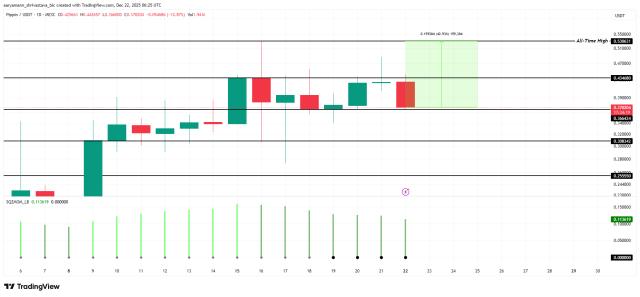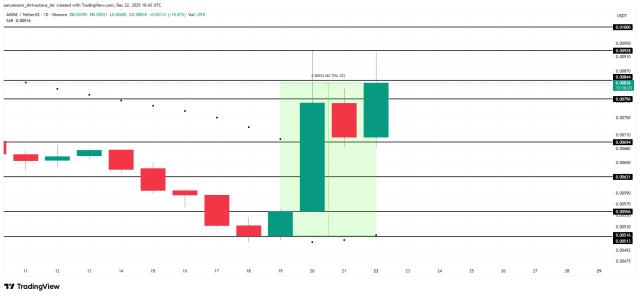I. Introduction
The Bitcoin and cryptocurrency market has recently experienced a new round of explosive growth, with one of the key driving factors being the so-called "Trump Trade" effect. Bitcoin has broken through critical historical resistance levels in a short period of time, not only indicating a strong rebound in the crypto market but also demonstrating the continued global investor preference for digital assets in an uncertain macroeconomic environment. This report will provide an in-depth analysis of the direct and indirect impact of the "Trump Trade" on the cryptocurrency market, exploring the resulting changes in market sentiment, price fluctuations, and potential future trends. We will comprehensively assess the future trends and potential risks of Bitcoin and other crypto assets by incorporating macroeconomic data, policy background, and market sentiment.
II. Macroeconomic Background Analysis: Multiple Drivers of the Crypto Bull Market
2.1 Slowing Global Economic Growth and the Hedging Properties of Crypto Assets
Global economic growth has continued to slow since 2023, particularly after the Federal Reserve's consecutive interest rate hikes, which have restricted US dollar liquidity and overall capital market liquidity. In the context of slowing economic growth, global investors are more inclined to allocate to risk-resistant assets, and Bitcoin, with its decentralized and anti-inflationary characteristics, is gradually being recognized as a "digital gold." In 2024, the cryptocurrency market is entering a new bull market cycle, closely related to the increase in global demand for safe-haven assets.
The hedging properties of cryptocurrencies stem from their low correlation with traditional markets. Especially after Trump's re-emergence on the political stage, his public support for cryptocurrencies has instilled confidence in the market, prompting investors to include Bitcoin as a "safe-haven asset" in their portfolios in the face of uncertain economic conditions, thereby driving up Bitcoin prices.
2.2 Federal Reserve Policy Changes and Currency Depreciation
The Federal Reserve's interest rate policy has a profound impact on the crypto market. In the post-pandemic period, the Federal Reserve has raised interest rates multiple times to control inflation, but in 2024, as the pace of rate hikes slows, market expectations for rate cuts have increased. The fluctuations in the US dollar index and the trend of US dollar depreciation have led investors to turn to cryptocurrencies to avoid the long-term depreciation risk of the US dollar.
In this context, Bitcoin's scarcity and borderless nature have attracted global capital inflows. Particularly under Trump's influence, the US market has seen a new round of demand for Bitcoin. The linkage between the US economy and the depreciation of the US dollar has prompted investors in other countries to enter the Bitcoin market to hedge against the risk of their own currency depreciation. Furthermore, the Federal Reserve's potential continuation of its accommodative monetary policy in the future will continue to benefit the crypto market.
2.3 The Long-term Threat of Inflation and the Anti-inflationary Properties of Cryptocurrencies
As the global economy recovers, inflation has continued to rise. The fixed supply, scarcity, and decentralized nature of cryptocurrencies have made them increasingly attractive as investment options in the context of escalating inflation. Particularly for Bitcoin, its constant total supply attribute has become a "hedge" against inflation, providing a unique store-of-value function compared to traditional assets.
Trump's public support has further strengthened this attribute. In the face of increased US political uncertainty and persistent inflationary pressures, Bitcoin's anti-inflationary characteristics have led more institutional and individual investors to view it as a long-term investment option. As global demand for anti-inflationary assets increases, Bitcoin is expected to become an important hedging tool in the new bull market cycle.
III. The Direct Impact of the Trump Trade on the Crypto Market
3.1 Understanding the Concept and Origin of the "Trump Trade"
The term "Trump Trade" first emerged during Trump's presidency, as his policies and actions frequently caused fluctuations in the capital markets, leading to rapid changes in financial market sentiment. Trump's economic policies, attitudes towards the Federal Reserve, and public positions on digital assets have all influenced investor risk appetite. Currently, Trump's renewed rhetoric supporting cryptocurrencies has reactivated this effect, and investors generally believe that his actions and statements have played an important role in boosting Bitcoin prices.
In the new round of market volatility, the "Trump Trade" effect has become prominent, with increased Bitcoin volatility. Trump's supportive stance on crypto assets has not only brought significant market attention but also led to the entry of more traditional and new investors. Under Trump's influence, the price fluctuations in the crypto market have become more frequent, also bringing greater investment opportunities.
3.2 Changes in Market Sentiment: From Cautious to Chasing Gains
The changes in market sentiment due to Trump's rhetoric are particularly evident. From his initial statements, Bitcoin prices quickly broke through key resistance levels, causing many investors with a cautious attitude to accelerate their entry into the market. Market sentiment shifted from cautious to chasing gains, with FOMO (Fear of Missing Out) sentiment driving up Bitcoin prices.
At the same time, the cryptocurrency market's sentiment index shows that as Trump's relevant statements have increased, the market's optimistic sentiment has risen to a new annual high. Investors not only view Bitcoin as a short-term profit-making tool but also as a long-term measure to hedge against future policy uncertainties and protect personal assets. This change in sentiment has triggered capital flows, further pushing up Bitcoin prices.
3.3 Far-reaching Impact on the Crypto Ecosystem
Trump's supportive attitude towards cryptocurrencies has not only affected Bitcoin's price but has also driven the development of the entire crypto ecosystem. Particularly in emerging areas such as Non-Fungible Tokens (NFTs), DeFi, and Web3.0, Trump's statements have injected new confidence into investors. These innovative areas, with their decentralized and risk-resistant attributes, have attracted a large amount of capital and developer attention, boosting the overall market activity. Especially in the NFT sector, with the Trump family launching crypto-based projects, NFT trading volume has increased significantly. The expansion of the NFT market has benefited mainstream crypto assets like Bitcoin and Ethereum, while also enhancing the liquidity of the entire crypto ecosystem, supporting the long-term development of the market.
IV. Analysis of Different Stages of the New Bull Market Cycle
4.1 Early Bull Market: Institutional Participation and Price Drivers
In the early stage of the bull market, the influx of institutional investors is the main driver of the market's rise. Stimulated by Trump's relevant statements, many institutional investors have increased their Bitcoin holdings, significantly improving market liquidity. According to statistical data, the proportion of institutional investor capital has risen sharply, indicating that Bitcoin is gradually being included in traditional investors' investment portfolios. Compared to the past, the institutional holdings in this bull market are more stable, particularly with the entry of large investment funds, hedge funds, and pension funds, which has led to more stable Bitcoin price fluctuations. The entry of institutions not only has increased the depth of the market but also reduced Bitcoin's volatility, enhancing the market's maturity.
4.2 Mid-Bull Market: FOMO Effect and the Entry of Retail Investors
The mid-stage of the bull market is usually accompanied by the amplification of the FOMO effect. Driven by institutional investors, the attention of retail investors has risen sharply. Especially against the backdrop of Trump's frequent media appearances, many retail investors have quickly joined the market to share in the bull market's dividends. The changes in the market sentiment index clearly reflect this phenomenon. Market activity has increased significantly, with trading volumes reaching new highs. Discussions about cryptocurrencies on various social media platforms have been constantly rising, particularly after Bitcoin's consecutive breakthroughs of psychological resistance levels, with the FOMO sentiment driving the entry of retail investors. In the context of high market sentiment, prices have risen rapidly.
4.3 Late Bull Market: Risk Control and Rational Investment
In the late bull market, market volatility may intensify, and risk appetite may decrease. At this time, some high-entry investors may gradually reduce their positions, leading to fluctuations in market sentiment. Meanwhile, government regulatory policies and market adjustment pressures may also affect prices. Although Trump supports cryptocurrencies, investors need to remain cautious to prevent high-position risks.
During this stage, the market often experiences volatility, and investors should strengthen risk control. The reduction of positions by institutional investors in the late bull market will also lead to price fluctuations. In the process of market turnaround, investors should adopt a prudent strategy to reduce risks.
Five. In-depth Analysis of Policy Risks
Trump's supportive attitude towards cryptocurrencies has brought positive signals to the market, but the legal status and compliance of cryptocurrencies still face risks.
5.1 Regulatory Dynamics in the United States
Although Trump supports cryptocurrencies, regulatory agencies such as the U.S. Securities and Exchange Commission (SEC) and the Commodity Futures Trading Commission (CFTC) still maintain a cautious attitude towards crypto assets. The regulatory measures of these agencies have a profound impact on the price volatility of the crypto market. Particularly in the approval of Bitcoin spot ETFs, the SEC's attitude will directly affect market liquidity and prices. If the regulatory authorities' attitude towards crypto assets changes, it may affect market sentiment and lead to price adjustments.
5.2 Global Policy Risks
In addition to the United States, the regulatory policies of other countries also have a significant impact on the market. For example, China and the European Union have a relatively strict attitude towards cryptocurrencies. Changes in policies of various countries may lead to capital flows, increasing market volatility. Under Trump's influence, the United States may relax its policies, but the positions of other countries also need to be closely monitored.
Six. Conclusion: Prospects of the New Bull Market and Investors' Coping Strategies
In 2024, against the backdrop of increasing global economic uncertainty and a reshuffling of the U.S. political landscape, the "Trump trade" effect has injected new momentum into the Bitcoin market. The breakthrough in Bitcoin prices and the start of the bull market cycle have brought abundant opportunities to the market, but also made the risks increasingly aggravated. Macroeconomic factors, the policy dynamics of the Federal Reserve, the inflation situation, and global regulatory policies are all key variables affecting the future market.
Through a detailed analysis of the current market, it can be seen that although Bitcoin's anti-inflation and hedging properties have been fully demonstrated in this round of the bull market, the driving force and challenges of this bull market are more complex and diverse than before. Whether it is the entry of institutions or the FOMO sentiment of retail investors, they may amplify the potential market bubble risk while fueling the market rise. Therefore, when investing in Bitcoin and other crypto assets, investors need to adopt a prudent strategy and closely monitor market signals to ensure returns while effectively controlling risks.
Seven. Future Investment Recommendations: Diversified Strategies and Risk Management
Based on the macroeconomic analysis of this bull market, the following are some strategy recommendations for investors:
7.1 Long-term Investment Strategy: Maintain Rationality and Patience
For investors who are optimistic about the long-term value of Bitcoin, accumulating positions in batches during the early and middle stages of the bull market is a relatively stable choice. Especially under the potential driving force of Trump's supportive cryptocurrency policy, the policy benefits in the coming period will further enhance the market appeal of Bitcoin. Long-term investors should maintain patience during market adjustments and adopt a medium to long-term investment cycle, avoiding frequent trading due to short-term fluctuations.
7.2 Medium-term Strategy: Seize Opportunities, Set Stop-Profit and Stop-Loss
In the middle stage of the bull market, when the price fluctuations occur frequently, investors can adopt a swing trading strategy. Utilize the ups and downs of the market to buy and sell, in order to realize stage-by-stage returns. However, it is necessary to be vigilant about the risks brought by the violent market fluctuations, and it is recommended to set clear stop-profit and stop-loss levels in each transaction to prevent potential losses due to changes in market sentiment.
7.3 Risk Management: Pay Attention to Policy Changes and Adjust Positions
Policy uncertainty has always been a source of risk in the cryptocurrency market. Although Trump's attitude may be beneficial to the crypto market, the future regulatory policies still have change risks, especially from the SEC and other international regulatory agencies. Therefore, it is recommended that investors closely monitor policy changes, maintain appropriate cash positions, and flexibly adjust their positions to cope with unexpected policy risks.
7.4 Diversified Investment Portfolio: Balance Traditional Assets and Crypto Assets
In this round of the bull market, although Bitcoin's characteristics as a hedging asset have gradually been recognized, its high volatility cannot be ignored. Investors should avoid investing all their funds in the cryptocurrency market, but rather through asset diversification, balance crypto assets and traditional assets to enhance the overall risk resistance of the investment portfolio. Traditional market bonds, gold, and other risk-resistant assets can be used as hedging tools to reduce the overall risk brought by the volatility of crypto assets.
Eight. Summary and Outlook: The Light and Shadows of the New Bull Market
Overall, in 2024, the Bitcoin market ushered in a new round of bull market explosion driven by Trump's support and changes in the global economic environment. Bitcoin's positioning as "digital gold" has become increasingly established, attracting a large number of institutional and individual investors to participate, and the depth and breadth of the crypto market have also gradually expanded. In the new bull market cycle, the market has shown unprecedented vitality, and it is expected that the bull market will continue for a relatively long time under the favorable policy and the continued tightening of the global economy.
However, the prosperity of the market often also means the aggravation of risks. Investors should be aware of the high volatility of crypto assets and the uncertainty of policies, and should not blindly chase the rising market. In the future, investors need to find a balance between market sentiment and macroeconomic environment, and achieve long-term stable returns through rational layout and prudent operation.
The arrival of the new bull market has brought unprecedented opportunities to the cryptocurrency market, but successful investment is inseparable from a deep understanding of market trends and prudent risk management. In an environment where opportunities and challenges coexist, only a stable and cautious investment strategy can grasp the true long-term value in the ever-changing crypto market.







